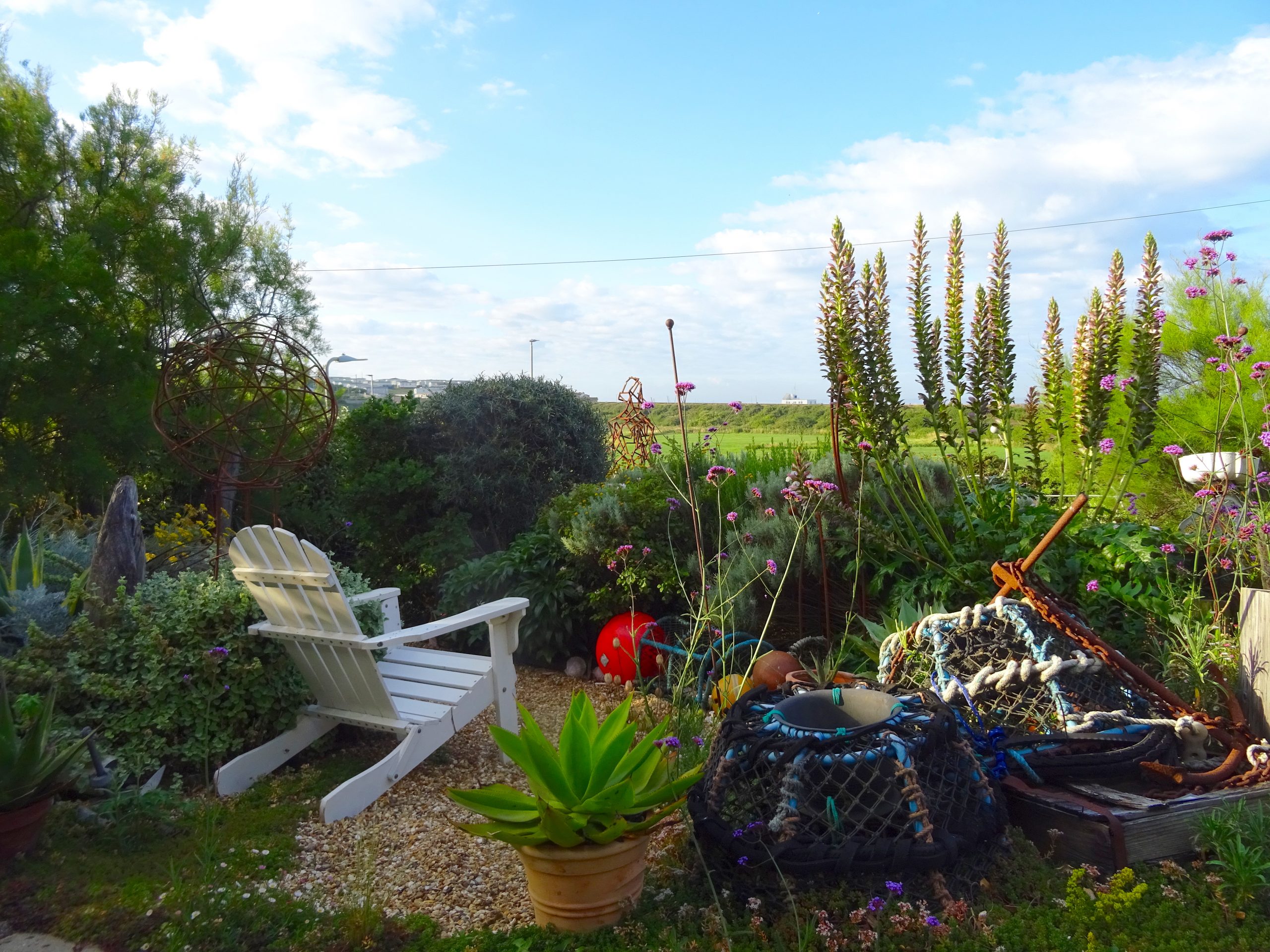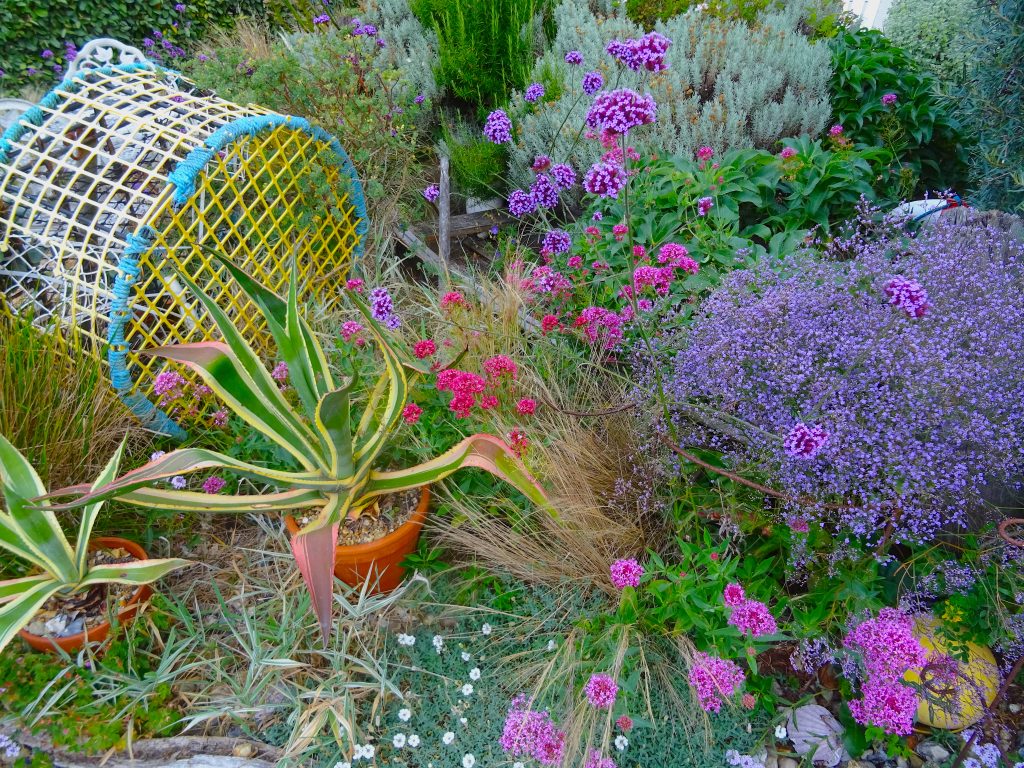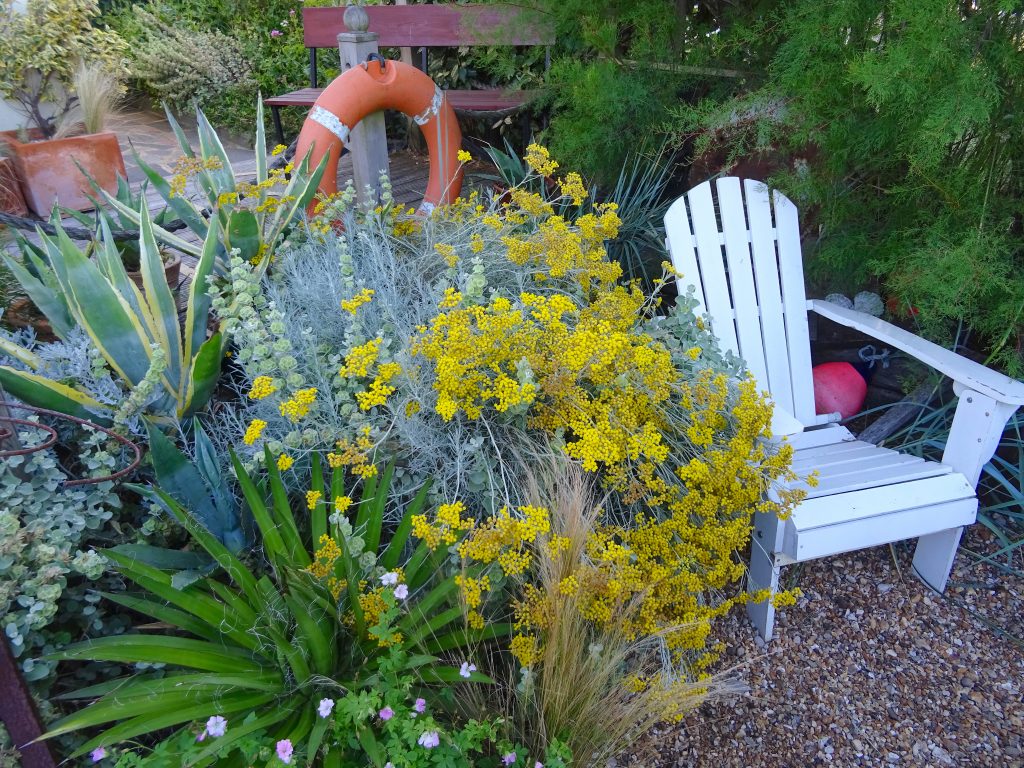Bracing a coastal garden for winter winds

In East Sussex, Garden Owner Geoff Stonebanks shares how he prepares for the challenging coastal winter in his garden, Driftwood. With strong winds and often heavy rain, these jobs around the garden are essential for ensuring the survival of many plants into the new year…
This time of year, there is always much to do in the garden to prepare for the oncoming winter. This year is no different, despite not having been able to open to visitors at all, due to Covid 19. Living where we do, a quarter of a mile from the sea, we can take the full force of the winter storms. The beach garden at the front of the house takes the brunt of it all but has been planted to cope with the wind and the rain. I have a collection of over 50 various agaves, all in containers, which are lifted and stored in the dry until the spring. Whilst they don’t mind the cold, it’s the wet that causes them to rot, so keeping them dry makes all the difference. This year, while moving them, I was able to check and repot as necessary and create 40 new plants from new growth over the summer. This part of the garden mostly looks after itself, and just requires a little maintenance to keep it tidy.
- The beach garden
The back garden however is a different story. It slopes up away from the house and faces north, so the area immediately behind the house is relatively sheltered, while the top end is very exposed. I have a large collection of marine sculpture in all shapes, mediums and sizes along with furniture used for visitors to enjoy tea and cakes in the summer, stained glass, vintage screens and many other interesting pieces. All this gets carefully moved into the summer house which is filled to the rafters – I always think it is like doing a complex jigsaw puzzle trying to fit it all in!
All my faded summer annuals are discarded and this year, I’ve filled over 40 containers with 300 new bulbs, daffodils, hyacinths and tulips. I find that using containers for my bulbs enables me to create wonderful spring displays by moving them into great vantage points from the house, once they are in bloom. I have six standard oleanders in large containers which get dropped in amongst planting schemes, so visitors believe they are established in the ground. These get lifted out and protected under cover until the spring.
I create three large displays of succulents in the back garden each year. These all have to be taken out of the garden and kept either in the heated greenhouse or the front or back porch of the house. All are in pots, including those buried in the raised bed. All told, I must have 150 containers to contend with. It is quite a mammoth task and fitting them all under cover, as well as the other delicate plants is a challenge each autumn.
The pond is a concentrated area of colour every summer with a large gunnera, in a container, towering over the area. The containers are emptied and bulbs put in for the spring and the gunnera has all its leaves cut back and some placed carefully over the crown of the plant and the container is then fleeced for extra protection. I have six large containers of chrysanthemums and as the season progresses they are relocated to maximise the lovely colour they provide.

The pond in summer
Many palms, large and small litter the back garden, some in the ground but quite a few in containers too. All the smaller ones are fleeced to protect the fronds from the severe wind burn they usually receive and those in the ground, that are now too large, have to fend for themselves as it is no longer possible to fleece them.
All in all, a long job to get it all completed before the first frosts.
Geoff’s top tips for caring for a coastal garden in winter
- Remove your delicate plants to a heated greenhouse, conservatory or your porch
- Fleece “at risk” plants that remain in the garden
- Remove plants in containers to the back wall of your house for some added protection
- Cut back shrubs to a manageable size to help prevent wind and storm damage
- Remember to check watering of containers through the winter months too, rain does not always get into them
- Tidy away fallen leaves and debris to help prevent winter homes for snails and slugs establishing!
- My top tip is to take the favourite delicate succulents into the house so you can appreciate them all winter
For more updates from our gardens in winter and gardening tips, click the button below:




















